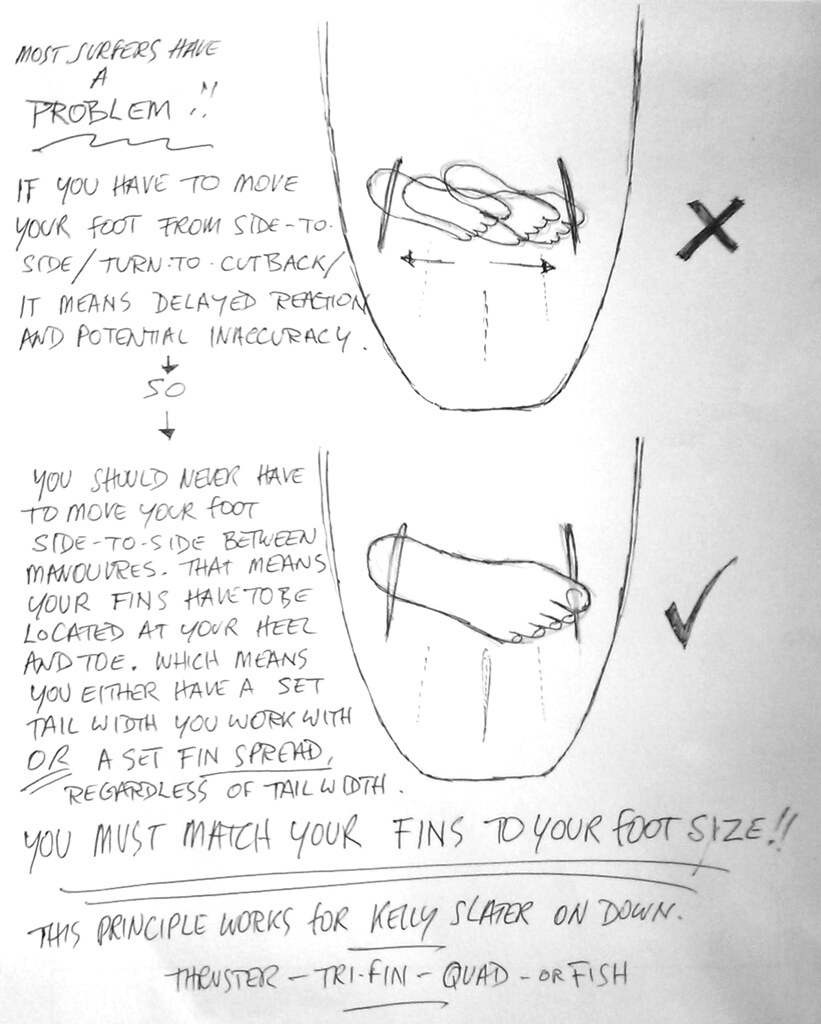In the idea snapshot below Bob explains a new apporach to fin placement where fins are not place relative todistance from the rails, but rather, to the size of your foot.... really incredible idea. Double click on the pic to see it full size.
Note: Bob is in the process of filing a patent for this concept in the US.





This comment has been removed by the author.
ReplyDeleteSo many BS assumptions with this idea, for example the possibility of boards without side fins is not considered
ReplyDeleteAlso, if you want to talk about the inefficiency which results from unnecessary foot movement then trash your noseriding designs in favour of longboards with a sweet spot. . . there you can patent that idea now it's a gift from olosurfer.com
Trying to patent this fin position concept is not only impossible ( what are you going to do to all the boards out there which already have fins placed this way. . . have the builders sued ?) it's not a very nice thought and reminds me of Bob's previous statements where he claimed that his popouts would make all but the handful of 'world's best' shapers redundant and that this would improve the surfing world as everyone rides only the world's 'best' shapes.
Ciao !
We also noticed your ridiculous statement recently which claimed that Bob Simmons and the Ancient Hawaiians didn't invent the shortboard because it didn't get 'validated' by mass market success. . . . that the shortboard was really invented by Bob McTavish ! Yeah right. . not
ReplyDeleteIn the past few decades there has been a revolution in computing and communications, and all indications are that technological progress and use of information technology will continue at a rapid pace. Accompanying and supporting the dramatic increases in the power and use of new information technologies has been the declining cost of communications as a result of both technological improvements and increased competition. According to Moore's law the processing power of microchips is doubling every 18 months. These advances present many significant opportunities but also pose major challenges. Today, innovations in information technology are having wide-ranging effects across numerous domains of society, and policy makers are acting on issues involving economic productivity, intellectual property rights, privacy protection, and affordability of and access to information. Choices made now will have long lasting consequences, and attention must be paid to their social and economic impacts. this content
ReplyDelete